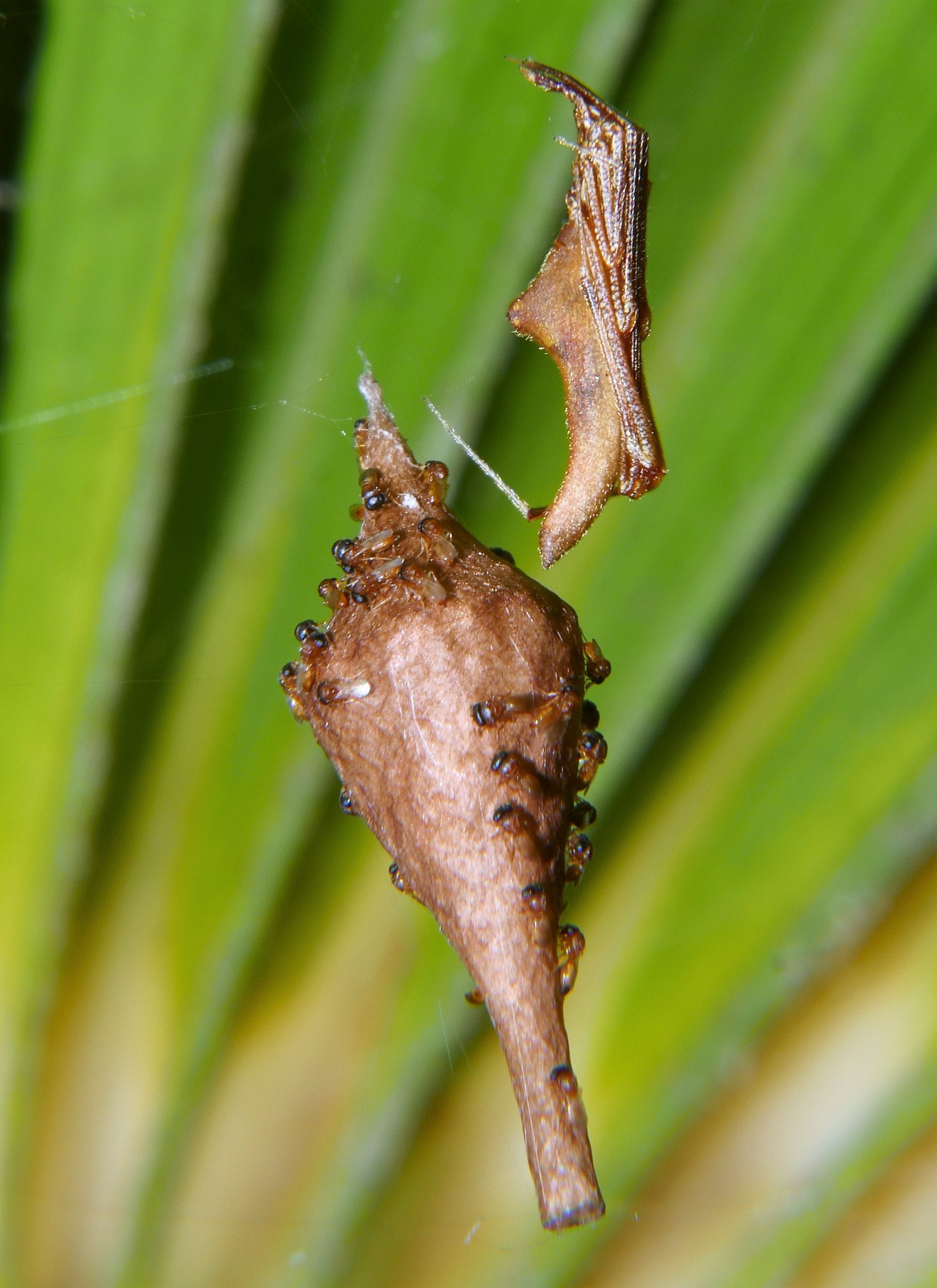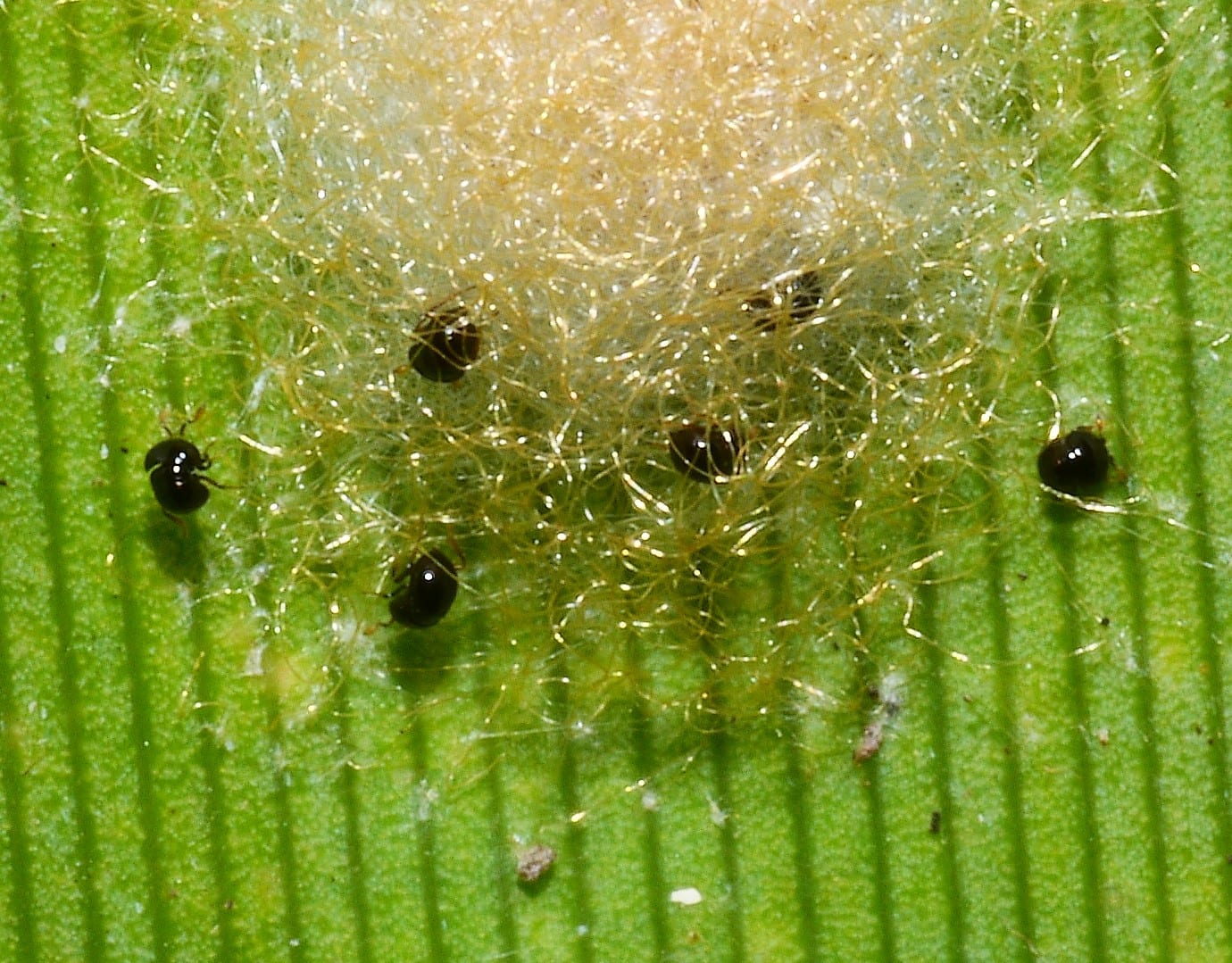Parasitic Wasps
Various



Parasitic Wasps by Steve Pearson
A few wasp families of the insect order Hymenoptera have members that are called
Parasitoids. That is, they are Parasitic wasps. Parasitic wasps range in size from
25mm long and easily seen with the naked eye to little black specks less than 1mm long
that develop within the egg of another insect. Imagine a wasp so small it lays its
egg inside the egg of a spider or other insects.
Parasitoid wasps live part of their lives developing inside an egg or internally in a host or on the outside of their host. This article is on the egg inside a spider egg types that I have observed and photographed here locally.
Female parasitic wasps have an ovipositor, the part that can look like a sting. But this is an egg-laying and placing organ at the tip of their abdomen. It is used to
lay eggs on or within their host or the eggs of a host. Some ovipositors are long enough to reach insects hidden inside trees and other protected locations like mantis ootheca and moth cocoons. Some ovipositors may look large but only a very few parasitoid wasp species
have an ovipositor capable of piercing human skin.
Most adult parasitic wasps have two pairs of wings but a few species are wingless as adults like the Baeus sp in the photos, but one in fifty do have wings as shown in the photos. Even though they are called flightless dwarf scelionid wasps, Baeus sp, the occasional male does have wings and flies away in search of other females for mating. This enhances genetic diversity by reducing in-breeding. In breeding weakens a species the gene pool and could result in the species ultimately dying out and becoming locally extinct.
The photos show the parasitoid Scelionid Wasp, Baeus sp, emerging from eggs of Zebra-stripedback Glass Spider, Conopistha sp as well as the spiders own babies. Perhaps showing again that for some species survival depends on large numbers of young. These Conopistha sp spiders lay several times over a breeding season as if trying again and again and hoping to pick a time when there are no wasps around. Again survival of species through high reproductive activity and number of offspring.
Parasitic wasps have a complete life cycle from egg to larva to pupa to adult. The life cycle of a parasitoid wasp varies with the species of wasp and some have the most complex life histories known in the animal kingdom. In some species, males are not known to exist and the females produce offspring without mating. Usually each parasitoid wasp egg produces a single larva, but some species are polyembryonic and many larvae develop from a single egg. Some parasitic wasps have multiple generations within a season while others may take a year or more to complete their development.
Parasitic wasps are generally considered to be beneficial as they help control populations of less desirable insects. They are very important in agriculture, attacking a wide range of insect pests that feed on important crops. Some parasitic wasps are deliberately raised and released to assist with the control of insect pests through the practice of biological control. However, some species of parasitic wasps target other species of parasitic wasps developing within a host whenever the opportunity arises. This lifestyle is called hyperparasitism and it can be very complex. Some parasitoid wasps attack parasitoids already attacking another parasitoid inside a host, even in egg parasitoid wasps.
I HAVE FOUND WASPS INSIDE WASPS INSIDE WASPS EGG CASES.
Photos show The female Christmas Elf Shoe Spider Romphaea cometes of family Theridiidae
that guards her eggs to protect them to hatching and emerging but this one fell victim
to micro parasitoid Platygastridae wasp. The one photographed at Airlie Beach had only ONE SPIDER baby to hatch and 50 parasitic winged Platygastridae wasps emerge. Another photo shows Orb Weaver Spider egg sack with parasitic Wasp Baeus species emerging. Interestingly the Orb Weaver Spider lays the eggs and goes away. Some other spiders like
our local tent web spider Cyrtophora sp guard the eggs until hatching then die and are food for the newly emerged young. Diversity is mind boggling.
| Classifications: | Insect |
| Family: | Platygastridae |
| Information sources: | Photos and information provided by Steve Pearson |



